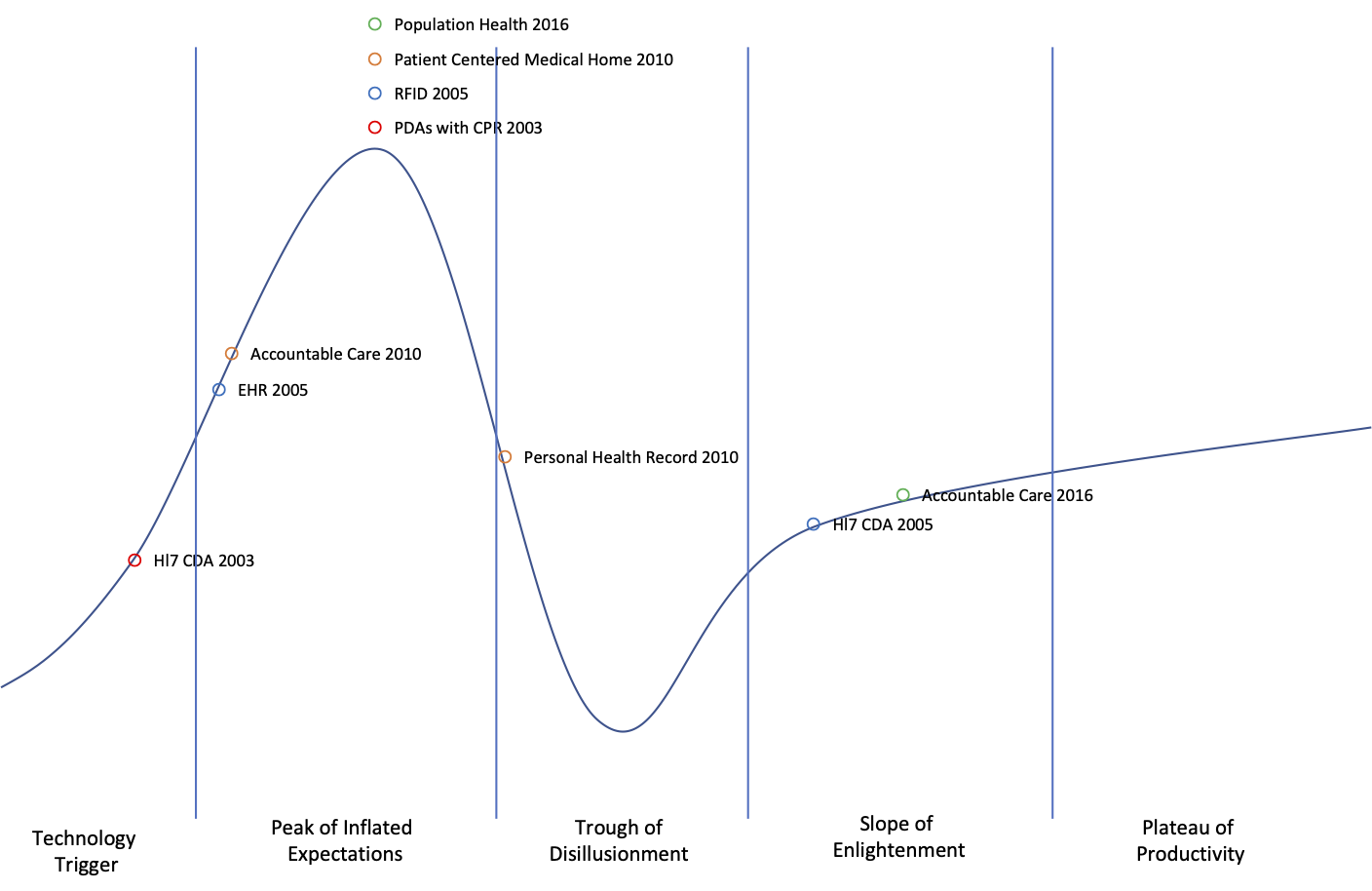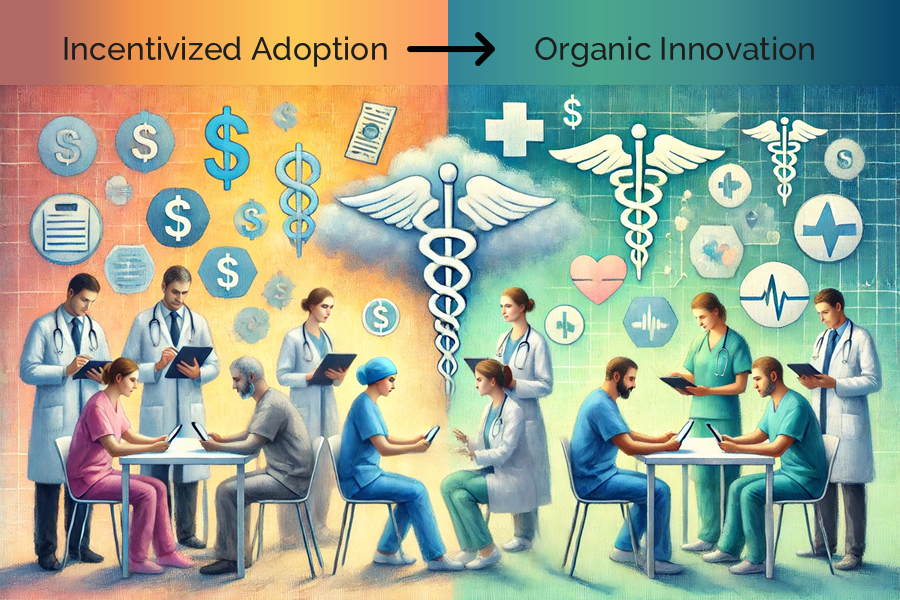2020: The Decade of Semantic Interoperability and Compliance
It's 2020, and it's not just the beginning of a new year but the beginning of a new decade. It's time to reflect on not only the previous year but the promises of healthcare over the past few decades.
With our solutions focused on compliance and interoperability, we are going to take a look back in time to see how we got to where we are and how we believe healthcare will fare in the next ten years.
It's hard to imagine that the largest EHRs in operation today were founded in the '60s and '70s. With that one data point alone, you would think that maturity around healthcare data sharing and application of the data would be further along than where it is now. In practice, adoption of the EHRs was only by some of the most prestigious institutions in the world, and it wasn't even until 2004 where the ONC was formed in the US to drive adoption of medical records in an attempt to reduce medical errors and eliminate paper records. Can you imagine technology being around for 30 years before someone says, hmm, we could use this to make lives better across the board?
The ONC and CMS together have been the primary driving force behind EMR adoption and usage of technology to improve health but put in human years; the ONC is still considered a juvenile, not able to drive itself. Healthcare in the US is complicated and very intricate, so much so that a small change in legislation or proposed ruling will have a ripple effect in time downstream.
If you looked at hype cycle charts from Gartner in 2003, the term EMR/EHR was not even on there, and it was referred to as CPR (Computer-based patient records). Here are a few brief items from Gartner's hype cycle over the years:
2003 PDA integrated with CPR systems was the lone item at the very peak of inflated expectations and HL7 CDA was still in the technology trigger phase
2005 RFID was the solitary item at the peak of inflated expectations, and EHR made the list as exiting the technology trigger, and HL7 CDA had moved through the peak of expectations, climbed out of the and trough of disillusionment, and was climbing the slope of enlightenment
2010 Patient-Centered Medical Home was one of three items at the peak of inflated expectations, Accountable care was in the technology trigger phrase, no longer found on the chart this year is HL7 CDA, and PHR was entering the trough of disillusionment with mainstream adoption of 5-10 years
2016 The notable item at the peak of inflated expectations is population health platforms, accountable care had moved through multiple phases and was climbing the slope of enlightenment
Why is all of this important? Well, each of the items mentioned was directly impacted one way or another by government legislation that dealt with compliance requirements or affected final payments. The rate of movement or prolonged existence of any technology on the hype cycle is dependent on law driving compliance or payments. You can call the healthcare industry a creature of habit. If something impacts an organization's ability to collect more payments or reduce penalties, it takes precedence. Sadly, patient care is rarely the primary driver. Better said, improved patient health is a side effect of most decisions in healthcare.
A Look Into the Future
Enough looking back, let's look forward to the future. A future where patient care and outcomes are the primary focus and the side effect are the systems needed to make it happen.
Call us optimistic, but we believe that 2020 will be the first year in the decade of healthcare changes that puts the patient first. The past has paved the way for us to get there both through technology and trials and tribulations. The most notable contributors to the future include the adoption of EHRs driven by the Accountable Care Act, adoption of various payment models and data requirements, and lastly, the push towards consumerism of healthcare from many consumer technology companies, including Uber and Airbnb.
2020 will be a year and beginning of a decade where data interoperability will be the foundation that the US will build a healthcare system focused on outcomes, not organizational outcomes but patient outcomes. Not just moving towards interoperability, but semantic interoperability. Patient-controlled data allows organizations across the continuum of providers and payers to better care for patients. Many are still waiting for the Interoperability and Patient Access Rule to be finalized. But based on comments, too many are looking at it as a checkbox and a burden as opposed to an opportunity to help patients get the information they need to care for themselves and loved ones. Compliance defined as the act of complying with a wish or demand, should be taken from the stance of what is best for the patient, not what the government is dictating because of rewards or penalties. For most of us, we do not live in a utopia. We live in a world where the rules and laws are created with the intent of creating an environment that is best to provide care for a patient, drives organizations to adopt systems, rather than organizations asking what they need to make patients healthier. To ensure that those organizations are tracking towards what has been determined is best practice, they must stay in compliance by reporting selected data points; otherwise, they face penalties. If the organizations consistently have good metrics, they are rewarded.
Semantic interoperability will make it easier for organizations to stay compliant. One thing that we at Darena solutions have a goal of doing is creating solutions to make staying compliant with rules and legislation easier, so that the organizations and their people can focus on being compliant with the patients' wishes and need to drive towards the desired outcomes.
Here is to a new year and new decade of interoperability and compliance to the patient's needs!










